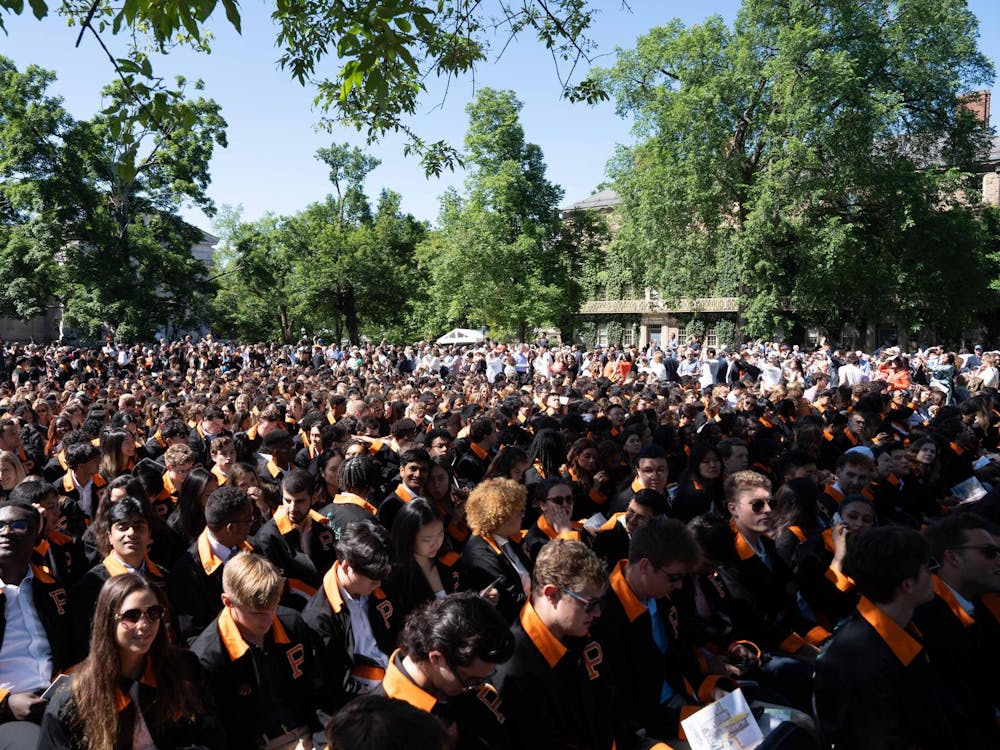When the time comes to pick classes at the end of each semester, we all find ourselves going through some stage of the same basic process: We consider how we’re going to fill our distribution requirements, what prerequisites or departmentals we need, which classes fill another class’s prereqs or how we’ll take classes around our independent work. Inevitably, the process becomes even more complicated when we factor in the afterthought of which classes we’d really like to take, which ones have the best professors or which ones have the most interesting topics. I believe that currently, the University’s distribution requirements —while much less restrictive than those of other schools —are still unnecessarily restrictive and that by eliminating or reducing some regulations concerning these requirements, Princeton can better achieve its goals.
The goal of fostering a comprehensive liberal arts education is both understandable and laudable. One of the things that most distinguishes the American higher education system from that of the U.K., Canada or other countries is that at the undergraduate level, one can take courses in a variety of disciplines. Because of the 12-course rule, which mandates that no more than 12 courses can be taken in a given department, we can (and are required to) take classes completely unrelated to our major even after we’ve declared it. There are myriad reasons why such diversity of exposure is beneficial to one’s education, and they need not be rehashed here. Suffice it to say that by expanding our horizons, we create well-rounded learners who can apply their knowledge to the interdisciplinary problems of the modern world.
While in principle I fully support the distribution requirements’ goal of furthering such academic exploration, I think that the quantity and specificity of the distribution requirements are of such a degree at present as to, in fact, work contrary to that goal.
First, by designating how and what we are to explore, the distribution requirements overstep the bounds of such exploratory encouragement. Whereas the 12-course rule directly leads to exploration by forcing us outside of our departments (a negative obligation, in a sense), the distribution requirements tell us what to do with those free classes (a positive obligation). This directly contradicts the freedom to explore that which Princeton wishes to espouse. Promoting well-rounded students —instead of just allowing students freedom in course selection —by forcing them to take certain distribution requirement classes makes sense, as these two goals don’t necessarily overlap. But I believe that by expanding the AP credit acceptance policy, Princeton can increase the freedom students have in course selection without significantly hurting its efforts to create a well-rounded student body.
This is not to say that there should be no distribution requirements at all, however. It seems logical and necessary that in the 21stcentury all college graduates should have some experience with science and lab work, some exposure to literature and the arts and some exposure to math, for instance. The (true) idea that a well-rounded 21stcentury college graduate ought be exposed to a wide array of subjects is not mutually exclusive with also allowing students freedom in choosing their course loads (beyond major and certificate requirements). For instance, it is true that all students should have some experience with literature and the arts, but it seems flawed to assume that a 5 on AP Lit doesn’t in any way fulfill an experience similar to taking a Literature and the Arts course.
The main counterargument here is that the University already allows for a great degree of exploration and that the distribution requirements are there to promote well-roundedness instead of exploration. To this, however, it seems necessary to clarify that I’m not saying we don’t get enough exploration; rather, that by allowing for greater freedom in passing out of distribution requirements through AP and similar credits, we can have a student body that is both well-rounded academically and has yet more freedom to explore. The similar experiences, for example, of AP World History and HIS 201: History of the World Since 1300 should be recognized. Someone who does well on AP World History has, according to the original reason for the creation of APs (to allow advanced high school students to take college-level courses), received an at least roughly equivalent experience of an introductory Historical Analysis requirement class.
Therefore, by allowing that student to pass out of one of his HAs and thus take any class he wants, the University allows its student body even more freedom in choosing classes without limiting the academic well-roundedness it rightly seeks to create.By allowing greater academic exploration without significantly diminishing the quality of the well-rounded liberal arts education Princeton seeks to instill in students, the increased use of AP and other credits to fulfill distribution requirements will be beneficial to the entire student body, regardless of degree program or academic discipline.
Ryan Dukeman is a freshman from Westwood, Mass. He can be reached at rdukeman@princeton.edu.







